
Students will rewrite a modern song with lyrics summarizing reasons for exploration and colonization
- Subject:
- Social Studies
- Material Type:
- Activity/Lab
- Author:
- William Allred
- Carrie Robledo
- Date Added:
- 05/18/2021

Students will rewrite a modern song with lyrics summarizing reasons for exploration and colonization
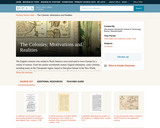
This collection uses primary sources to explore the motivations and realities behind life in the American colonies. Digital Public Library of America Primary Source Sets are designed to help students develop their critical thinking skills and draw diverse material from libraries, archives, and museums across the United States. Each set includes an overview, ten to fifteen primary sources, links to related resources, and a teaching guide. These sets were created and reviewed by the teachers on the DPLA's Education Advisory Committee.
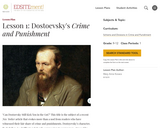
Students examine the divided nature of Raskolnikov's character and personality. Then they uncover the divided natures of other characters"”a fact that becomes increasingly evident as the novel progresses to go beyond character analysis to comprehend Dostoyevsky's underlying themes. What does the novel imply about human nature? Dostoevsky clearly perceived that people are neither simple nor easily classified; they are often torn in opposite directions by forces both inside of and outside of themselves, sometimes with catastrophic results.
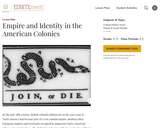
In this lesson students will examine the various visions of three active agents in the creation and management of Great Britain's empire in North America: British colonial leaders and administrators, North American British colonists, and Native Americans.
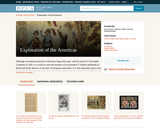
This collection uses primary sources to explore early exploration of the Americas. Digital Public Library of America Primary Source Sets are designed to help students develop their critical thinking skills and draw diverse material from libraries, archives, and museums across the United States. Each set includes an overview, ten to fifteen primary sources, links to related resources, and a teaching guide. These sets were created and reviewed by the teachers on the DPLA's Education Advisory Committee.
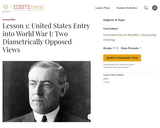
American foreign policy continues to resonate with the issues involved in the entry of the United States into World War I"â€unilateralism versus foreign alliances, the responsibilities of power, the influence of the military-industrial complex on foreign policy, the use of force to accomplish idealistic goals. Understanding the choices the Wilson administration made and their consequences provides insight into international affairs in the years since the end of the Great War and beyond. In this lesson, students reconsider the events leading to U.S. entry into World War I through the lens of archival documents.
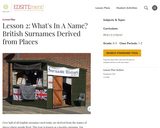
Over half of all English surnames used today are derived from the names of places where people lived. This type is known as a locative surname. For example, a man called John who lived near the marsh, might be known as John Marsh. John who lived in the dell was called John Dell. Other examples are John Brook, John Lake, and John Rivers.
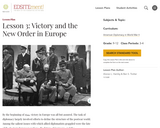
By the beginning of 1944, victory in Europe was all but assured. The task of diplomacy largely involved efforts to define the structure of the postwar world. Why and how did the United States attempt to preserve the Grand Alliance as American diplomats addressed European issues?
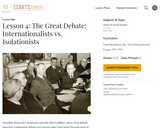
President Roosevelt's proposal to provide direct military aid to Great Britain launched a nationwide debate over foreign policy that lasted through most of 1941. Should the United States observe its traditional policy of non-involvement in European affairs (to which World War I had been a notable exception), or should the United States take whatever steps were necessary (up to and, perhaps, including direct involvement in the war) to prevent a German victory?In this lesson students are introduced to the main arguments used by both sides in this great debate. Through the use of an interactive map and primary source documents, students trace the events of 1941, and think critically about what foreign policy would have best served national interests.
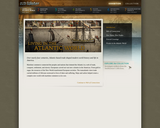
The web of maritime connections between Western Europe, western and central Africa, and the Americas that made up the Atlantic world is the focus of this section of "On the Water: Stories from Maritime America", an online exhibition from the Smithsonian's National Museum of American History. Students will learn how Atlantic-based trade shaped modern world history and life in America. Topics covered are the tobacco and sugar trades, the Middle Passage and the transatlantic slave trade, and the piracy that plagued the Caribbean Sea and North American coast during this period.
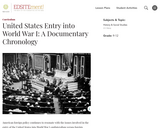
In this curriculum unit, students reconsider the events leading to U.S. entry into World War I through the lens of archival documents.